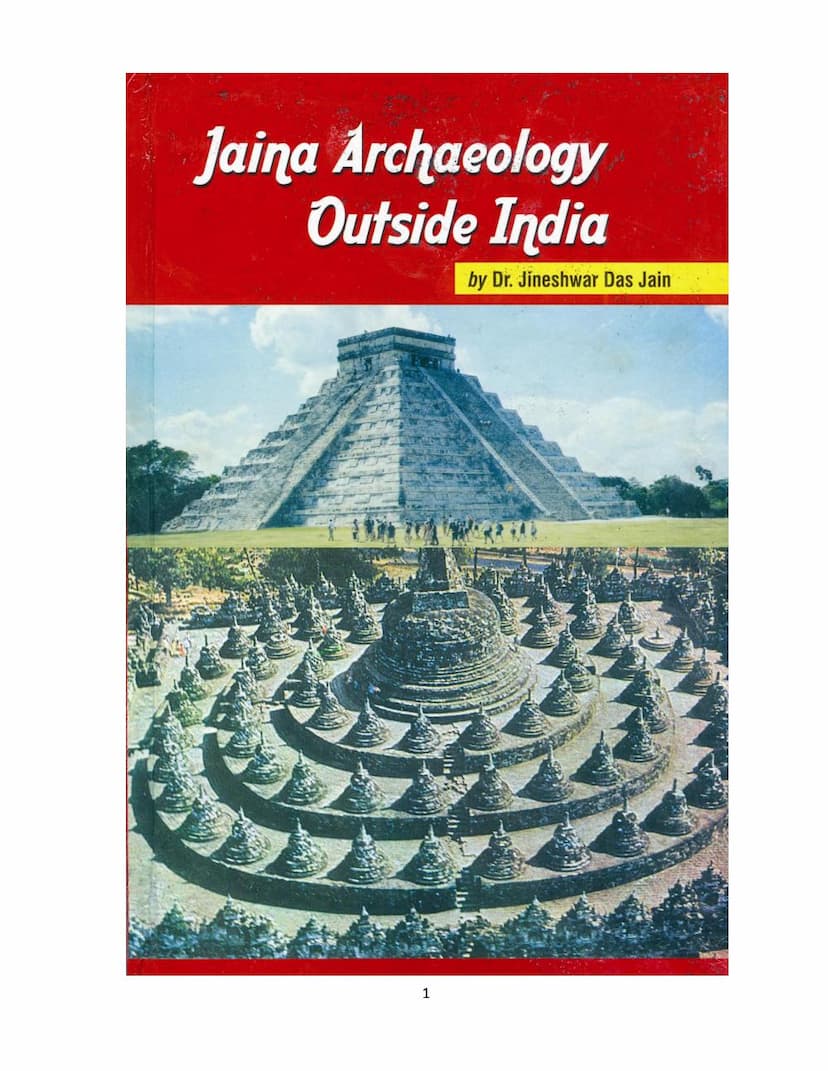Jaina Archaeology Outside India
Added to library: September 2, 2025

Summary
This comprehensive text, "Jaina Archaeology Outside India" by Dr. Jineshwardas Jain, presents a compelling argument for the extensive global reach and ancient origins of Jainism, extending far beyond its traditional geographical confines in India. The author, a distinguished engineer and researcher, meticulously details his extensive research and travels to over thirty-three countries, presenting archaeological evidence, inscriptions, and historical texts to support his thesis.
Core Arguments and Findings:
- South-East Asia as Ancient Mahabharata: A central and significant finding of Dr. Jain's research is the proposition that South-East Asia, particularly regions like Cambodia, Thailand, and Indonesia, was the actual location of the ancient "Mahabharata." He posits that various names translated by historians as "Greater India," "Exterior India," or "Further India" refer to this region.
- Jainism's Ancient Roots: The book strongly asserts that Jainism predates both Lord Mahavira and Lord Parshvanatha. It highlights mentions of Tirthankaras like Rishabha, Ajit, and Arishtanemi in the Yajurveda and the Bhagwat Purana, reinforcing the antiquity of the faith. Evidence is presented suggesting worship of Rishabha Deva as early as the 1st century BC.
- Reinterpretation of Major Monuments: Dr. Jain challenges conventional interpretations of major world heritage sites, arguing that many prominent structures, such as Borobudur in Indonesia and the temples of Angkor in Cambodia, were originally Jain monuments.
- Borobudur: He suggests that Borobudur, known as the "Nandishwar Dveepa Temple," was constructed by the Shailendra dynasty, who he believes were influenced by or directly followed Jainism. He interprets the iconography and architectural elements, such as the 72 stupas, as symbolic representations of Jain philosophical concepts like the ten stages of the Das Lakshan Dharma. He also notes the mention of "Jina" in inscriptions related to Borobudur and challenges the solely Buddhist attribution of the monument.
- Angkor Wat and Angkor Thom: The book extensively discusses the Five Meru temples of Angkor Wat and the 52-towered temple of Angkor Thom, identifying them as replicas of the Borobudur's Nandishwar Dveepa temple. He connects the architectural motifs and religious symbolism to Jain cosmology and practices, including the representation of Mount Meru. He also discusses the possible origin of the Khmer rulers from India and their adherence to Jain principles.
- Global Spread of Jainism: The author extends his research to other parts of the world, suggesting Jain influence in:
- Mexico (Maya Civilization): He posits that the pyramids of the Maya civilization bear resemblances to Jain temples, particularly in their celebration of the five Kalyanakas (ceremonies of Tirthankaras). The presence of serpent motifs is also linked to Jain lore.
- Greece: Dr. Jain claims that Greek philosophers like Pythagoras, Pirrho, and Plato received teachings from Jain saints (referred to as "gymnosophists") in India, influencing their philosophies of non-violence and vegetarianism. He even suggests that Pythagoras may have been a Jain muni named Pihitrasava.
- Egypt, Persia, and Central Asia: The book suggests the presence of Jainism in these regions, citing evidence of naked ascetics, vegetarianism, and the worship of abstract deities. The influence of Jainism on early Islamic communities and Sufi traditions is also explored.
- Pakistan and Kashmir: Archaeological findings, including Jain idols and temples, are presented as evidence of Jainism's historical presence in these regions.
- China: The book points to unearthed statues in China and the influence of emperors who followed Taoism (potentially a synonym for Jainism) as indicators of Jainism's historical footprint.
- Reinterpretation of "Buddha" and "Shiva": Dr. Jain proposes that in many ancient contexts, figures referred to as "Buddha" or "Shiva" may actually represent Tirthankaras, particularly Lord Rishabha. He argues that the emphasis on nudity and specific iconography associated with these figures aligns with Jain traditions.
- Challenging Conventional Historiography: Throughout the book, Dr. Jain critically examines the assumptions and interpretations of Western and established historians, highlighting what he perceives as oversights or biases in attributing ancient monuments and cultural practices solely to Buddhism or Hinduism, without considering the possibility of Jain influence.
Methodology:
Dr. Jain's approach is multidisciplinary, drawing upon:
- Archaeological evidence: Excavations, statues, temple structures, and ruins are cited as primary evidence.
- Inscriptions and ancient texts: Sanskrit, Pali, and local scripts found on monuments and in historical documents are analyzed.
- Travel and personal observation: The author's extensive travel to these sites provides a direct perspective.
- Comparative mythology and religious studies: He draws parallels between Jain narratives and those found in other cultures.
Overall Significance:
"Jaina Archaeology Outside India" is a significant work that challenges established historical narratives by presenting a bold thesis about the global presence and antiquity of Jainism. It encourages a re-examination of world heritage sites and ancient civilizations through a Jain lens, suggesting a deeper and more interconnected spiritual history of humanity than is commonly understood. The book serves as a testament to the author's rigorous research and dedication to uncovering and presenting a different perspective on global religious history.